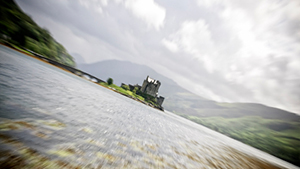
This is the storyboad Prada and Tiffany made. It briefly captures the main scenes we intend to have in our title sequence. However, after our lesson on storyboarding we feel that it needs more detail. It will give us a distinct idea of what happens in the storyline within the two minutes. We have included captions on each box discussing what is happening in the scene.
- A couple sitting in a theatre/ cinema, appear to be happily enjoying the movie.
- The film stop for an interval, at which point the main protagonist excuses himself from the girl.
- He assures her he will be right back, and exits the theatre into the lobby.
- There he meets with a glamorous women woman dressed in red. They have a silent discussion, during which she hands him an envelope of money and then departs.
- The protagonist then goes to the electric supply and turns the theatre lights off.
- The room is pitch black and a scream is heard from the girl he was sat with.
- The protagonist is then shown wiping blood off his knife after killing the girl.
- He briskly departs the building and come across a waterfall where he reminisces memories of him and the girl.














.jpg)




 This was
This was 